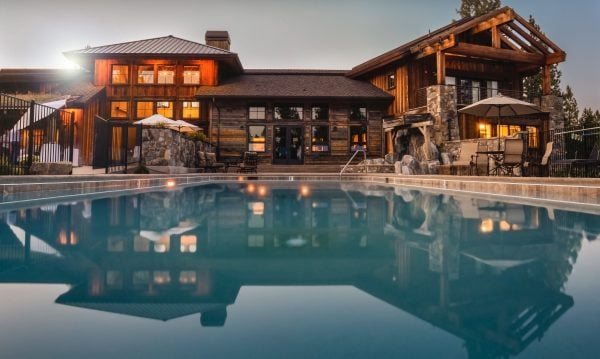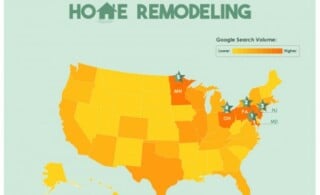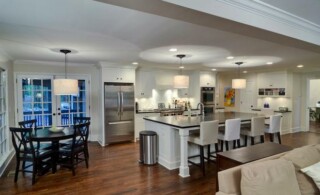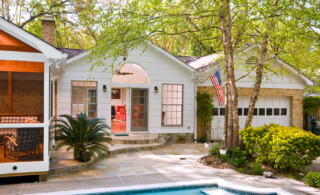
August 28, 2018
New data from the S&P CoreLogic Case-Shiller Index of home prices shows that the pace of home price increase is still elevated, but is finally starting to slow, as was inevitable. The S&P CoreLogic Case-Shiller U.S. National Home Price Index showed a 6.2% annual rate of increase in June, down from 6.4% in the previous month. That’s a tiny slowdown, but I believe it is the beginning of a larger slowdown in appreciation. Home prices and monthly payments cannot continue to outrun buyers’ incomes for much longer.
The low supply of for-sale listings, combined with strong demand, has translated into declining home sales in July. It has also contributed to fast appreciation and record home prices. The shortage of homes for sale relative to demand has led to competitive bidding among prospective buyers. This is driving prices out of reach for many and forcing would-be buyers to examine other options.
HomeAdvisor’s newest True Cost Report shows evidence that many homeowners are opting to stay where they are and improving their home rather than moving. Two out of three homeowners surveyed said they are planning to spend the same amount or more on home improvements in the next twelve months as they did in the prior twelve, partly reflecting this shift in attitudes about moving.
Vegas, Seattle, and San Francisco Continue Double-Digit Pace (Vegas Now Rising Fastest)
The new data from S&P CoreLogic Case-Shiller show that Las Vegas, Seattle and San Francisco continued to see the fastest price appreciation. In June, these cities saw the following year-to-year increases.
- Las Vegas – 13.0%
- Seattle – 12.8%
- San Francisco – 10.7%
Back to 2006/07 Peak (During the Bubble) Prices in Half of the Large Cities
It is startling to realize that home prices are back above their bubble peaks in just over half of the largest markets in the nation. In inflation-adjusted terms, however, only three cities — Dallas, Denver and Seattle — are above their 2006 peak.
Las Vegas’ housing prices are still 47% below peak when you adjust for inflation, so the recent increase there does not represent as bad of an affordability problem as in Seattle or San Francisco. That explains why Las Vegas is able to continue to record increases on the order of 13%.
Our forecast is for home prices appreciation to slow sharply in the markets that have the most severe affordability gaps, but also to slow in the nation as a whole. Rising mortgage rates will add to the downward pressure on home price appreciation over the next few years.
The S&P CoreLogic Case-Shiller 20-City Composite Home Price Index is based upon the changes in the value of homes involved in two or more sales transactions across twenty major metropolitan areas throughout the country. Because this index actually looks at the same house at two different times, it provides a more accurate picture of appreciation than does a median. This is one of the most well-respected, if not the most well-respected representation of movements in home values.
“Tappable” Homeowner Equity at an All-Time High
One beneficial effect of these soaring home prices is that homeowners have more spending power. Homeowners now have a collective $5.8 trillion in tappable equity, the highest volume ever recorded, according to Black Knight, Inc., and 16 percent above the last home price peak in 2006. Tappable equity is the share of equity available for homeowners with mortgages to borrow against before reaching a maximum total combined loan-to-value (LTV) ratio of 80 percent. The average homeowner with a mortgage gained $14,700 in tappable equity over the past year, and has $113,900 against which they could borrow.
Homeowners are accessing the equity in their homes at an unusually low rate these days, suggesting that there may be “untapped potential” for home improvement and the economy. People are leery of the variable rates on HELOCs (home equity lines of credit), so many borrowers are doing cash-out refinances, even at a higher interest rate, in order to put their equity to work.
Price Appreciation Will Be Cut in Half (At Least)
The recent pace of home price increase is not sustainable. But that’s not the same thing as saying we’re in a bubble, or that home prices have to come down. Rather, home price appreciation is destined to slow, and in some areas of the country, it is going to slow sharply. My prediction going forward is that income ratios and rising interest rates will drive a leveling off of home prices, particularly in the most expensive markets in the country. I am part of a panel of economists who provide forecasts for Zillow, and the latest prediction I provided them is for home price appreciation to slow to 4% in 2019, and I said it could dip below 2% before moving back up (very gradually) after 2020.
 Top States for Home Improvement
Top States for Home Improvement  America’s Costliest Kitchen Projects
America’s Costliest Kitchen Projects  Empty-Nesters, Smart-Home Tech & Their Impact on Home Improvement Trends
Empty-Nesters, Smart-Home Tech & Their Impact on Home Improvement Trends  More Evidence on the “Nesting is Investing” Trend
More Evidence on the “Nesting is Investing” Trend  Home Depot Sales Beating the Rest of the Economy
Home Depot Sales Beating the Rest of the Economy 

Are You Familiar With This Topic? Share Your Experience.